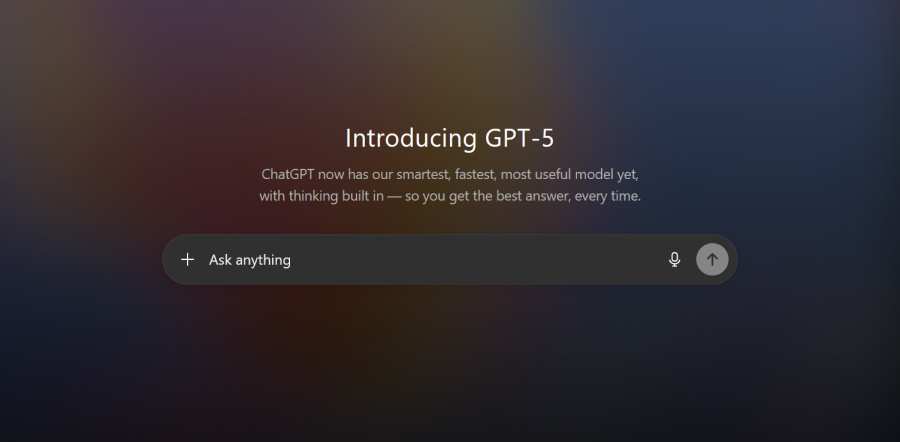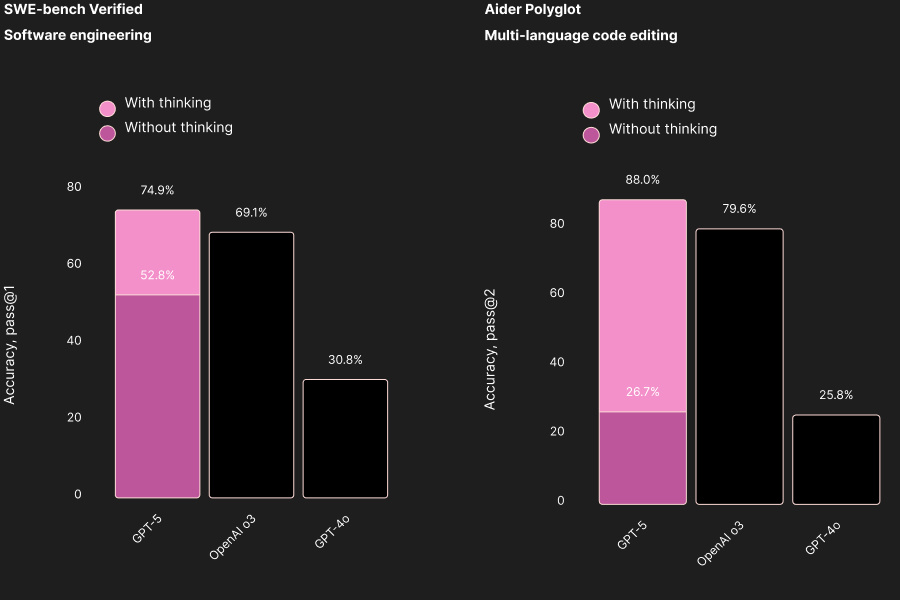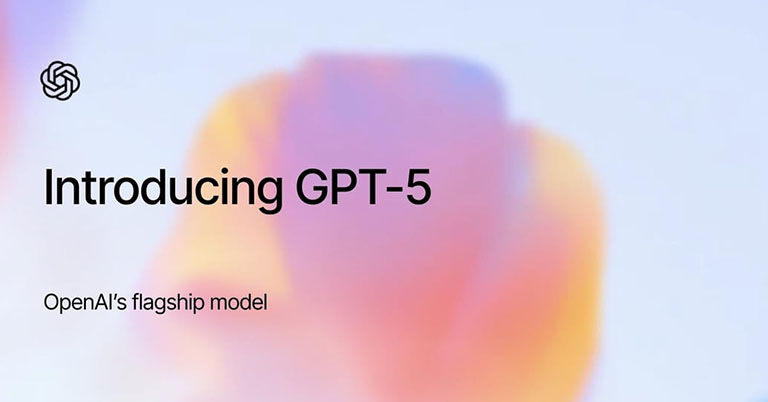No headings found
When talking about AI, all of our minds go straight to OpenAI's ChatGPT. With the AI race reaching new heights, we can always expect them to bring something new. And after months of waiting, the new GPT-5 model from OpenAI is finally here. The best part is that it is also available for free users.
What is new in the OpenAI GPT-5 model?
According to the company, this is the "smartest, fastest, most useful model yet". And that it has "PhD-level intelligence". It supposedly has improved performance across various areas like coding, health, creative writing, and visual perception. And impressively enough, GPT-5 has already climbed to the number 1 spot in LMArena's leaderboard less than 24 hours after its launch.

Coding
The one area where this model excels the most is coding. OpenAI reports it outperforms the o3 model in over 70% of internal "frontend coding" evaluations. It also shows stronger results across broader coding benchmarks and is now used in agentic tools like Cursor, Windsurf, and GitHub Copilot to improve developer workflows.

On "Aider Polyglot", an evaluation of code editing with GPT‑5 recorded a new high of 88%, a one-third reduction in error rate compared to o3. Along with that, it also recorded the highest in the SWE-bench with 74.9% accuracy.
Also Read:
More honest, safer, and helpful responses
Other than this, OpenAI says they have worked hard to make GPT‑5 significantly less susceptible to hallucinations. It shows a sixfold drop in hallucinations compared to GPT‑4o, based on benchmarks like LongFact and FActScore. They found that OpenAI o3 still gave confident answers about nonexistent images 86.7% of the time, versus just 9% for GPT‑5. It recognizes when tasks can't be completed rather than manipulating the user.

How to access GPT-5 model?
The GPT-5 model started rolling out yesterday to all OpenAI subscribers, including free users. Although you will default to "GPT-5 mini" — a smaller model — once you hit your usage limits. And you might wanna upgrade to OpenAI's "Plus" subscription for USD 20/month for extended access. Or to the USD 200/month "Pro" tier for unlimited access. Moreover, "Pro" users will also get access to "GPT-5 Pro" that thinks for longer for the most comprehensive results. For developers, GPT-5 will be available in three API sizes: gpt-5, gpt-5-mini, and gpt-5-nano. With prices ranging from as low as USD 0.05 per 1 million input tokens for the "gpt-5-nano" to USD 1.25 per 1 million input tokens for "gpt-5".
- Meanwhile, watch our comprehensive deepdive into Vivo X200 Ultra
Article Last updated: August 8, 2025






